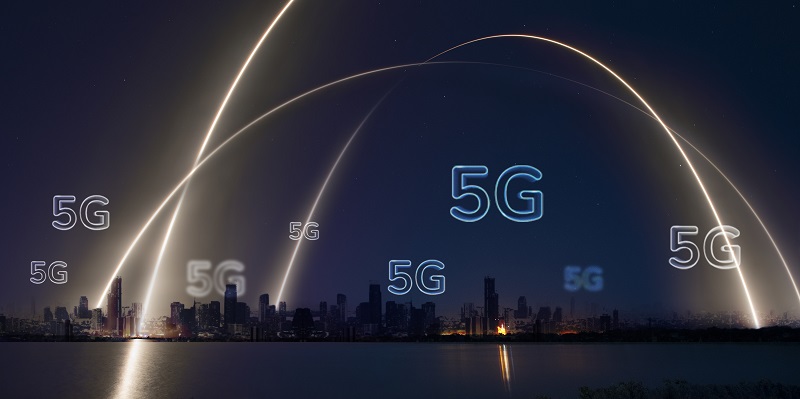The railway sector is on the brink of a technological breakthrough with the introduction of 5G technology. This cutting-edge innovation is set to usher us into a new era of intelligent transportation, characterized by high-speed connectivity, real-time data analysis, and improved operational efficiency. In this article, we will delve into the immense potential of 5G in transforming smart railways and enhancing the overall passenger experience.
Real-Time Tracking of Trains
The implementation of 5G technology enables railway operators to track the exact location of trains in real time. This breakthrough allows for efficient traffic management and the prevention of potential accidents. With up-to-the-minute information on train movements, operators can optimize routing and scheduling, thus reducing congestion and enhancing operational efficiency.
Efficient Traffic Management and Accident Prevention
By harnessing the power of 5G connectivity, railway operators can now effectively manage traffic by leveraging real-time data on train locations and statuses. This capability allows for the proactive prevention of accidents and the timely identification of potential hazards. Automatic alerts and notifications can be employed to ensure swift responses, leading to enhanced safety and improved overall system performance.
Support for a Higher Number of Connected Devices
5G technology offers a significant advantage over its predecessor, 4G, by supporting a much higher number of connected devices. This capability is particularly important in the context of smart railways, where a multitude of devices and sensors need to be seamlessly integrated. With 5G, operators can efficiently manage and control a vast array of devices, offering a comprehensive view of the entire railway network.
Seamless Integration of Devices into the Railway System
The advent of 5G technology allows for the seamless integration of various devices into the railway infrastructure. From onboard sensors to trackside cameras, these devices can communicate with each other and with the central control system in real-time. This integration enhances the ability to remotely monitor and control various aspects of the railway network, resulting in improved operational efficiency and decision-making.
Comprehensive View of the Network
With 5G connectivity, operators can access a comprehensive and detailed view of their railway network. This real-time oversight enables them to monitor various parameters, such as train locations, speeds, and the condition of tracks. With instant access to this critical information, operators can proactively address maintenance issues, reduce downtime, and optimize operations to ensure a smooth and efficient railway system.
Integration of AI and Machine Learning
The power of 5G technology enables the integration of advanced applications such as artificial intelligence (AI) and machine learning into railway operations. By leveraging this combination, operators can analyze vast amounts of data from sensors and cameras to detect potential issues such as track defects or equipment malfunctions. AI algorithms can learn from historical data, enabling predictive maintenance and minimizing disruptions in the railway system.
Data Analysis for Issue Detection
Real-time data analysis is a crucial aspect of smart railway operations. With 5G connectivity, operators can process and analyze data in real time, identifying patterns and potential issues that may affect system performance. By leveraging this data-driven approach, operators can make informed decisions to address emerging challenges promptly, ensuring uninterrupted and reliable passenger services.
High-Speed Internet Connectivity
The implementation of 5G technology will provide passengers with high-speed internet connectivity, transforming their travel experience. Whether browsing the web, streaming multimedia content, or utilizing productivity tools, passengers can enjoy a seamless and uninterrupted connection throughout their journey. This advancement will not only benefit passengers but also open up opportunities for innovative services and personalized experiences.
Real-time Information Services
5G technology empowers railway operators to deliver real-time information directly to passengers’ devices. From train schedules and delays to updates on connecting transportation services, passengers can stay informed about their journey every step of the way. Additionally, interactive maps and navigation systems can guide passengers through stations, ensuring a stress-free and convenient travel experience.
High Infrastructure Costs
The implementation of 5G technology in smart railways necessitates significant infrastructure investments. Building a robust 5G network requires deploying a vast number of base stations and antenna systems along the railway tracks. The high costs associated with this infrastructure upgrade pose a considerable challenge for railway operators.
Extensive Testing for Safety and Reliability
Safety and reliability are paramount concerns in railway operations. As such, the implementation of 5G technology in smart railways requires thorough testing to ensure compliance with stringent safety standards. Extensive trials and validations are necessary to guarantee that the system works seamlessly and can withstand various operational scenarios.
Belief in the Outweighing Benefits
Despite the challenges, the benefits associated with the integration of 5G technology into smart railways far outweigh the obstacles. Improved operational efficiency, enhanced passenger experience, and predictive maintenance capabilities offer a glimpse into the future possibilities of smart railways. As technology advances and costs reduce, these benefits will become increasingly accessible.
Eventual Standard Feature
The potential of 5G technology to revolutionize the railway industry is widely recognized. With its capacity to support high-speed connectivity, real-time data analysis, and intelligent applications, 5G is poised to become a standard feature in the railway sector. As operators and technology providers collaborate to overcome challenges and refine implementation processes, this shift to 5G-powered smart railways is inevitable.
In conclusion, the introduction of 5G technology into smart railways promises a remarkable transformation in the way railways are operated and experienced. With improved operational efficiency, enhanced connectivity, and real-time data analysis capabilities, 5G empowers railway operators to deliver a safer, more efficient, and enjoyable journey for passengers. Although challenges remain, the widespread adoption of 5G technology is inevitable, propelling the railway sector into an era of unprecedented innovation and connectivity.

